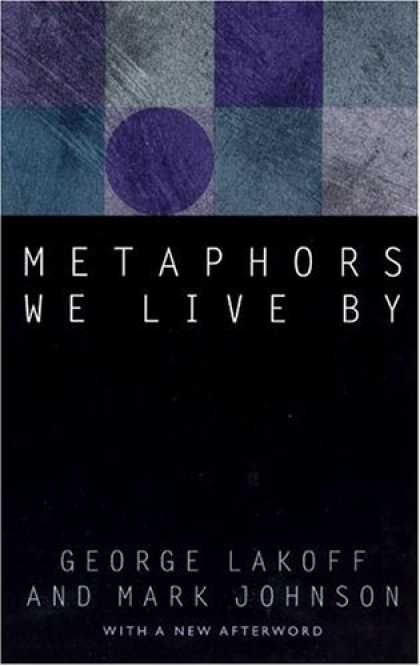Metaphor as key
 Friday, November 16, 2012 at 7:56PM
Friday, November 16, 2012 at 7:56PM 
I've been reading Lakoff's seminal work on metaphor, Metaphors We Live By. Written originally in 1980, the new version has an afterword written in 2003 that alone will floor you. I'd been listening to him on his recent book tour promoting his latest book, The Little Blue Book: The Essential Guide To Thinking and Talking Democratic, in which he tells progressives how to frame their ideas, and was reminded that he is one of the noted experts on the subject of framing, and therefore, the use of metaphor.
I've used the idea of Metaphor as a "wild card" in my deck of analytical tools for desgin research for some time. Instinctively, I and my students saw that if we could find the right metaphors that best expressed what we were seeing in the research, we would go a long way toward explaining the essence of what we had learned. For example, one of a team studying the phenomenon of adults playing in kickball leagues turned to me and said, "Kickball is a social filter." I understood him instantly. By choosing to join the kickball team instead of the softball or dodgeball team, one is choosing the type of people one wants to hang out with. Each crowd is different, and we had heard the kickball players saying they "wouldn't be caught dead" with the dodgeball players—a rowdier crowd with fewer brains on board (their words, not mine, so don't start in on me...!). It's easy to see how many of the activities we choose, from sports to knitting, act as social filters.
So we've long asked our students to consider the metaphors in play regarding the topic they are studying. But Lakoff brings depth and scholarship to the discussion, to the point where I'm a bit lost on how to convey to my students the breadth of his work and the many ideas they'd find useful.
Take marriage. To Lakoff, marriage can be a partnership, a journey through life together, a haven from the outside world, a means for growth, or a union of two into a third, larger entity. If one partner sees marriage as a partnership and the other, a haven, we can easilty see that the responsibilites inherent in the partnership frame will be at odds with the relief from responsibility that comes with the haven frame, and a rocky road would lie ahead.
Our research is based on the fact that one person's frame of reference will be different from another's, and it's our business to find out which frame a particular participant might be using. That's why we use the laddering technique in our interviews—to not accept any idea at face value, but to dive deeper into what a person means, as precisely as possible. At the heart of this idea is understanding the metaphors that people use as their operating system.
One of Lakoff's most interesting ideas is that aside from being lenses through which we look at the world, metaphors can offer new meaning. His example is the new metaphor of Love as a Collaborative Work of Art, compared to conventional metaphors of love—as a physical force, a patient (a sick relationship, a healthy marriage), madness, magic, war, a journey, and so on. The new metaphor has what Lakoff calls "reverberations" that can act as a guide: "The metaphor provides an organization of important love experiences that our conventional conceptual system does not make available.... It is work that requires that special balance of control and letting go that is appropriate to artistic creation.... it gives love a new meaning.... it can sanction actions, justify inferences, and help us set goals.... The meaning will be partly culturally determined and partly tied to past experiences."
All of this is potent fuel for the designer, and uncovering this fuel is the job of design research.
 Katherine Bennett | Comments Off |
Katherine Bennett | Comments Off |  lakoff,
lakoff,  metaphor,
metaphor,  research methods
research methods